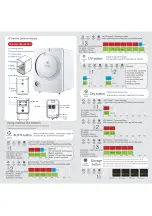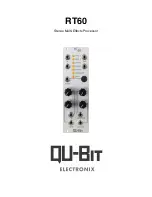
Protected against access by
fi
ngers
to hazardous parts; protected against
solid foreign bodies with a diameter
of 12 mm or larger
Not protected
against ingress
of water
8 / 42
51506-002 GB/2020-10
1
electronic GmbH & Co. KG • Heinrichstraße 3-4 • 12207 Berlin • Deutschland • info@bandelin.com
1.4
Technical data
SONOPULS ultrasonic homogenisers are interference-free and marked with CE.
Safety: EN 61010-1;
EMC: EN 61326-1
1.4.1
Ultrasonic generator (GM)
Operating voltage
230 V~ (± 10 %) 50/60 Hz, alternatively 115 V~ (± 10 %)
50/60 Hz, cable length 2 m
Protection class:
I
Ultrasonic frequency:
20 kHz ± 500 Hz
Frequency control
1
:
automatic, resonance frequency search
Time settings range:
00:01 – 99:59 [mm:ss] or continuous operation
Ultrasonic operating mode:
Pulsating or continuous
Pulsation time ON (t
E
):
1 - 60s – (see Chapter 3.2.2)
Pulsation time OFF (t
A
):
1 - 60s – (see Chapter 3.2.2)
Ultrasonic control:
Amplitude – (see Chapter 3.2.3)
Amplitude settings range:
10 - 100 % in 1 % steps
Amplitude indicator:
Presetting and progress bars
Operating controls:
Rotary knob, membrane keys
Operating data display:
LCD graphic display, illuminated
Remote control (turning on/o
ff
):
Button on the ultrasonic transducer, potential-free contact,
foot switch TS 8 (optional)
Protection code:
IP 20 pursuant to DIN EN 60529
Device-speci
fi
c:
Ultrasonic generator
GM 2070.2
GM 2200.2
Rated ultrasonic output
2
, max.
70 W
200 W
Weight
1.9 kg
2.2 kg
Exterior dimensions (L × W × H)
245 × 215 × 140 mm
1 Frequency
control:
The ultrasonic generator has an automatic search feature for resonance frequency and rate adaptation while in operation. Causes for
a change in the resonance frequency are, for example, a warming of the ultrasonic transducer and the probes, a change in the acoustic
load due to changes in viscosity, and even the mounting of another probe. A frequency drift during operation is corrected by the automatic
frequency control. The optimum working frequency is sought using the resonance frequency search, e.g. after a change in probe.
2
Rated ultrasonic output:
In the case of amplitude control, the ultrasonic power that is needed for the desired probe amplitude is dependent on the viscosity of
the medium. In order to prevent damage to the ultrasonic generator and converter, the power is limited to the maximum permitted peak
value. In the case of highly-viscous media, this can also result in the desired amplitude not always being reached.









































